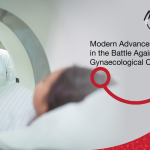Question
A friend of mine, who is in his 60s, was hospitalised a few weeks ago due to complaints of chest pain. We thought he had an heart attack as he had previously suffered from high blood pressure and cholesterol. However, the doctor concluded that my friend had angina instead. What are the differences between the two and how can we prevent angina?
Answer
Angina, or Angina Pectoris, is the term used to describe chest pain that is a result of narrowing or blockages in the heart arteries (blood vessels that supply oxygen and other nutrients to heart muscles). If the chest pain is caused by chest wall muscle or ribcage bones, the term “angina” cannot be used to describe the condition. Other terms such as “atypical chest pain” or “musculoskeletal chest pain” or “non-cardiac chest pain” would be more appropriate, if the chest pain does not arise from a cardiac or heart problem.
A heart attack occurs when the narrowing in the heart arteries causes a sudden and total blockage of one or more heart arteries. This is a medical emergency and the immediate attention of an interventional cardiologist is recommended. The interventional cardiologist, or a “plumber”, can then quickly “unclog” the blocked heart artery through minimally-invasive means such as coronary angioplasty (“stenting”), to restore blood flow to the dying heart muscle cells.
Hence, angina can be a sign of an impending heart attack, but this does not necessarily mean that a heart attack will always follow an angina episode. Some cases of heart artery narrowing (thereby causing angina) are not so advanced to cause a sudden and complete blockage of heart arteries. Nevertheless, anyone with angina should be screened thoroughly for coronary artery disease, by a heart specialist.
Angina or chest pain arising from narrowing of heart arteries can be avoided by slowing down, or preventing the build-up of plaque in the inner lining of the heart arteries, which can eventually cause tight narrowing of the heart arteries. This process of plaque build-up in the heart arteries is termed “atherosclerosis”.
Coronary (or heart) atherosclerosis can be prevented or delayed by:
i. Controlling your blood pressure by healthy eating, exercise and sometimes with medication
ii. Controlling your blood cholesterol levels through a healthy diet, exercise and often with medication
iii. Controlling your blood sugar levels (if you are diagnosed with diabetes)
iv. Quit smoking: Cutting down on cigarette smoking is not good enough, complete abstinence from smoking is necessary
v. Adopting a healthy lifestyle, through regular exercise and a balanced die










